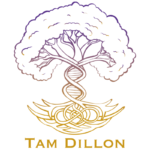In the world of healing and spiritual practice, there’s a persistent myth that practitioners must reach a state of complete healing before they can serve others. The “healed healer” ideal is quietly reinforced through marketing language, social media performance, and even some training spaces. It implies that personal mastery must precede professional service, and that those still navigating their own struggles should step back until they are somehow “finished.” But healing doesn’t work like that. And neither does mastery.
The truth is, mastery in this work doesn’t come from having resolved every wound or eliminated every flaw. It comes from developing the capacity to stay engaged in your own self-development while continuing to show up for others. It’s not about being complete. It’s about being committed.
When we perpetuate the idea that healers must be fully healed, we not only create unrealistic standards, but we also push people into hiding their growth edges. It discourages honesty and creates a culture of performance over presence. Practitioners begin to curate their identities rather than living them, afraid that being in process will disqualify them. In reality, the most trustworthy practitioners are those who know where they are still in process – and have support systems in place to keep doing the work.
One of the most common forms of avoidance in our field is spiritual bypassing: using spiritual tools or philosophies to avoid uncomfortable emotions, hard truths or unresolved trauma. It’s especially seductive for practitioners, who often have deep toolkits and a strong sense of mission. But bypassing isn’t healing. And when practitioners stop doing their own inner work, when they treat healing as a destination instead of a lifelong relationship, they can become disconnected from the very integrity they teach.
This disconnection doesn’t always look dramatic. It might show up as cynicism. Emotional burnout. Frustration with clients. A sense of emptiness in the work that once lit you up. Or a slow, creeping numbness that feels like fatigue but is really a lack of alignment. Often, the signs that we’ve paused our self-work are subtle. But over time, they erode our effectiveness, our clarity and our fulfillment.
Continuing self-development isn’t just good for the practitioner, it directly serves the client. Clients benefit when we have the humility to name our limitations. When we’re grounded enough to hold complexity. When we’re aware enough to avoid projection. Our ongoing work supports clearer boundaries, more attuned presence and a deeper ability to meet others without distortion.
It also helps prevent harm. A practitioner who isn’t actively reflecting on their own blind spots is more likely to unintentionally reenact patterns of power, control or neglect. Someone who hasn’t examined their shadow may interpret resistance as disrespect, or assume leadership where collaboration is needed. These missteps are rarely malicious, but they are avoidable with consistent self-inquiry.
Doing your own work as a practitioner means being honest about what you’re carrying. It means having spaces where you can be the client – not just the guide. It means seeking supervision or peer support, returning to therapy when needed, engaging in training not for certificates but for insight. It means noticing when something a client brings up hits too close to home, and having the tools and community to process that responsibly.
It also requires time. In a culture obsessed with output and visibility, it can feel like a luxury to step back. But recalibration is not indulgence, it’s maintenance. Your inner work is not separate from your professional work. It is the foundation of it. And that foundation needs regular tending.
What does ongoing self-work look like in practice? It varies. For some, it’s a daily spiritual practice. For others, it’s journaling, supervision, bodywork, or deepening into somatic or psychological healing. There’s no single formula. But the common thread is intentionality. Self-development for practitioners isn’t an add-on. It’s the frame through which all other work is held.
In the end, mastery doesn’t come from perfection. It comes from proximity – to yourself, to your truth and to the parts of you still growing. The healed healer is a myth. But the committed, self-aware, humble practitioner? That’s real. And that’s more than enough.



